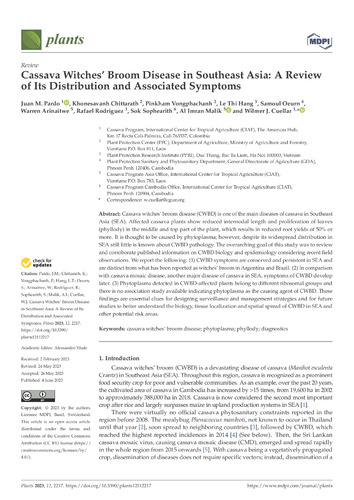Cassava Witches’ Broom Disease in Southeast Asia: A review of its distribution and associated symptoms
Cassava witches' broom disease (CWBD) is one of the main diseases of cassava in Southeast Asia (SEA). Affected cassava plants show reduced internodal length and proliferation of leaves (phyllody) in the middle and top part of the plant, which results in reduced root yields of 50% or more. It is thought to be caused by phytoplasma; however, despite its widespread distribution in SEA still little is known about CWBD pathology. The overarching goal of this study was to review and corroborate published information on CWBD biology and epidemiology considering recent field observations. We report the following: (1) CWBD symptoms are conserved and persistent in SEA and are distinct from what has been reported as witches' broom in Argentina and Brazil. (2) In comparison with cassava mosaic disease, another major disease of cassava in SEA, symptoms of CWBD develop later. (3) Phytoplasma detected in CWBD-affected plants belong to different ribosomal groups and there is no association study available indicating phytoplasma as the causing agent of CWBD. These findings are essential clues for designing surveillance and management strategies and for future studies to better understand the biology, tissue localization and spatial spread of CWBD in SEA and other potential risk areas.

